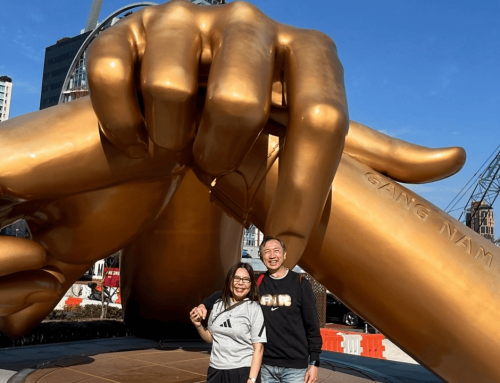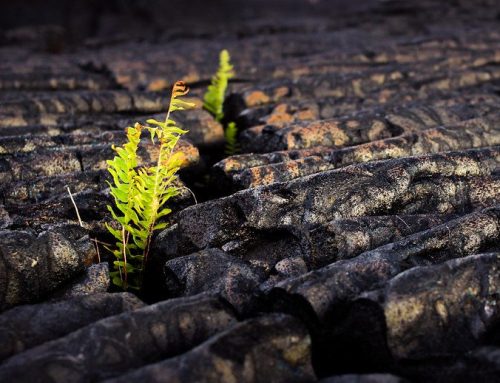Sue and I share a love of travel. Quite apart from feeling totally blessed to have meaningful vocations, our commitment we made to each other when we founded EQ Strategist – “to go wherever there is a sincere interest in our help as long as it doesn’t have an adverse impact on our family” – has given us the blessing of visiting many amazing places across Australia, the Asia Pacific and Middle East regions.
For us, travel is not just an opportunity to recharge and experience magic moments together but to learn from the stories that belie every place we visit. Stories that inspire and enrich our lives.
Life can only be understood backwards; but it must be lived forwards.
– Soren Kierkegaard
.
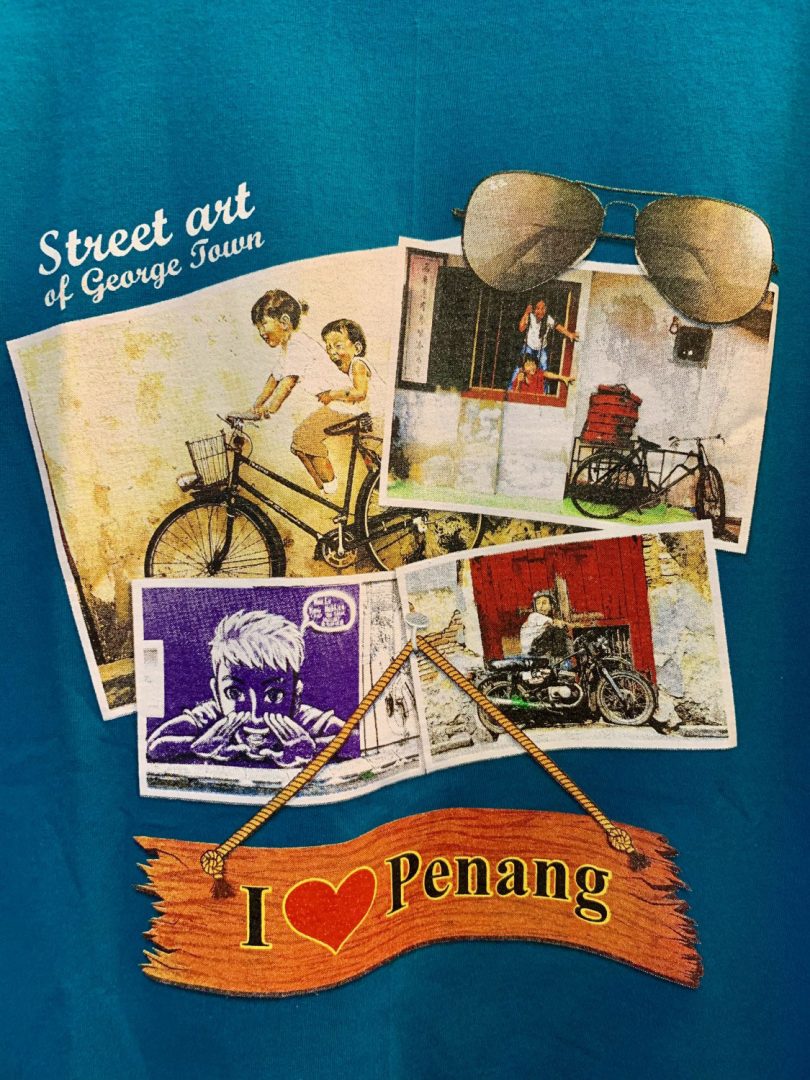 Last month, we took a short break to the beautiful island state of Penang in Malaysia. Penang has always had a special place in our hearts. We’ve always loved it for great friends and family we have there and frankly, for its amazing street food. And yet, we had not visited for more than 20 years!
Last month, we took a short break to the beautiful island state of Penang in Malaysia. Penang has always had a special place in our hearts. We’ve always loved it for great friends and family we have there and frankly, for its amazing street food. And yet, we had not visited for more than 20 years!
It was a spontaneous decision – spontaneity being a conscious choice we’ve made to create greater variety and to experience life to the fullest. And having made that decision, I did some research to plan an itinerary that would make it an extraordinary trip for both of us.
Through googling, I was surprised to learn that Georgetown, the capital city of Penang, with its centuries-old colonial buildings, Chinese temples and shop-houses had been granted world heritage status by UNESCO in 2008.Over time, Sue and I have learned to treasure architecture of the past era that through meticulous restoration have become special gems through the fusion of the old and the new.
Some become iconic – the Queen Victoria Building (QVB) in Sydney and CHIJMES in Singapore are two of my personal favourites. Such buildings remind me of key traits of the highly resilient – to not just be open and embrace the positives of change and also to build that on the foundation of timeless principles that foster fulfilment – love, integrity, service, faith and passion. And of the traits of great leaders who leave a lasting, positive legacy – a combination of personality, which to me is defined as one’s public image, how you dress, how you perform in social interactions and character, the foundational and timeless core values that drive one’s behaviours.
Leadership is a potent combination of character and strategy. But if you must be without one, be without the strategy.
– Norman Schwarzkopf
.
Not that I needed another reason to visit Penang but the thought of just being able to appreciate it now from an older, and hopefully broader and wiser lens, made me even more excited about our trip. Having clarity of the purpose of our visit helped significantly with decisions on where to stay and what our general itinerary would be like, with a ton of whimsical flexibility thrown in. We chose a boutique heritage hotel – the Areca – that was located right in the heart of Georgetown and walking distance to amazing street food, street art and key heritage attractions.
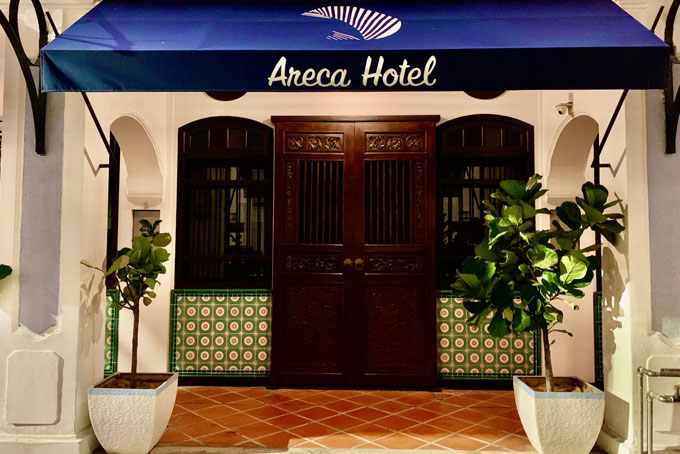
.
The trip exceeded my personal expectations in so many ways. The street food was awesome, catching up with friends and family a special treat and notwithstanding the heat and humidity, the fact we could see and experience so much on foot! A highlight was our visit to the iconic Blue Mansion, one of Georgetown’s most lauded architectural gems. Our choice to check this place out was prompted by its reputation.
Apart from Lonely Planet rating it one of the 10 greatest mansions in the world, UNESCO had recognised it with an Award for Culture Heritage Conservation. And for Sue and I, the fact that it was one of the key buildings featured in the 2019 rom-com hit “Crazy Rich Asians”. For the movie buffs, we learned at our visit this has and continues to be a very popular site for film-making.
Your reputation walks through the door before you do.
– Janine Allis
.
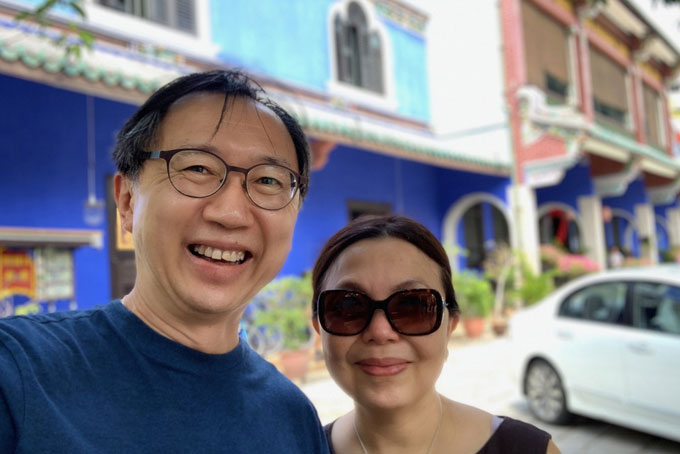
.
Through a very knowledgeable and passionate tour guide, we learned that the Blue Mansion is also called the Cheong Fatt Tze Mansion, named after its original creator and owner. Cheong Fatt Tze (1840-1916), a Hakka Chinese, was one of the richest men in Southeast Asia in the late 19th. and early 20th. centuries. Born to a very poor family in the Chinese province of Guangdong, he had migrated at age 17 to Southeast Asia to seek his fortune and to escape the hardships in China due to the Second Opium War.
Working at a provision shop in Batavia, he met and married his employer’s daughter. It was through this marriage that he was given financial support by his father-in-law to commence business. This man with humble beginnings tapped into his inner resources of great vision, courage and tremendous work ethic to build a financial empire that spanned the Dutch and British colonies across Indonesia, Malaysia, Singapore and China. Such was his entrepreneurial genius that at the time, he was honoured with the title of “Rockefeller of the East” by New York Times.
You’re either remarkable or invisible. Make a choice.
– Seth Godin
.
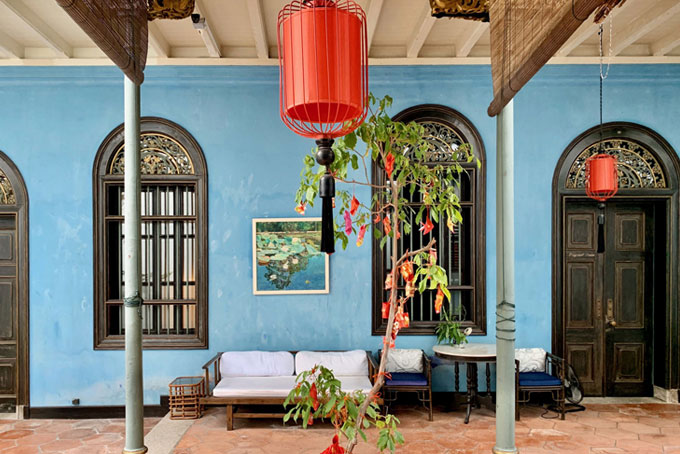
.
Cheong had at least eight wives, eight sons and six daughters. This man built and owned numerous residences across the region but the one that will ensure his legacy lives on forever is what is regarded as the finest Chinese mansion in Southeast Asia – then known as Le’ Blue Mansion. This magnificent construct was built between 1896 and 1904 in an upper-class neighbourhood of rich Hakkas, who built grand European-style mansions along the street.
Like other transformational leaders with a grand vision founded by core values, Cheong bucked the trend by choosing to build a Chinese-style mansion. Cheong Fatt Tze loved the sophisticated beauty of traditional Chinese houses. More than anything, he wanted to preserve his heritage and share his love of culture and tradition through architecture.
If you want to build a ship, don’t herd people together to collect wood and don’t assign them tasks and work, but rather teach them to long for the endless immensity of the sea.
– Antoine de Saint-Exupéry
.
With that came about one of the most lavish and elaborate constructions of his time and one built meticulously in line with geomancy (“feng-shui”) principles. I was intrigued to learn from our enthusiastic tour guide that many practitioners of geomancy who have visited this place refer to it as “feng-shui perfection”. With an eye for detail and excellence, Cheong Fatt Tze was determined to use only the best materials for his Mansion. He shipped artisans in from Southern China and imported building materials from as far as Scotland.
Vision is not enough. It must be combined with venture. It is not enough to stare up the steps, we must step up the stairs.
– Vaclav Havel
.
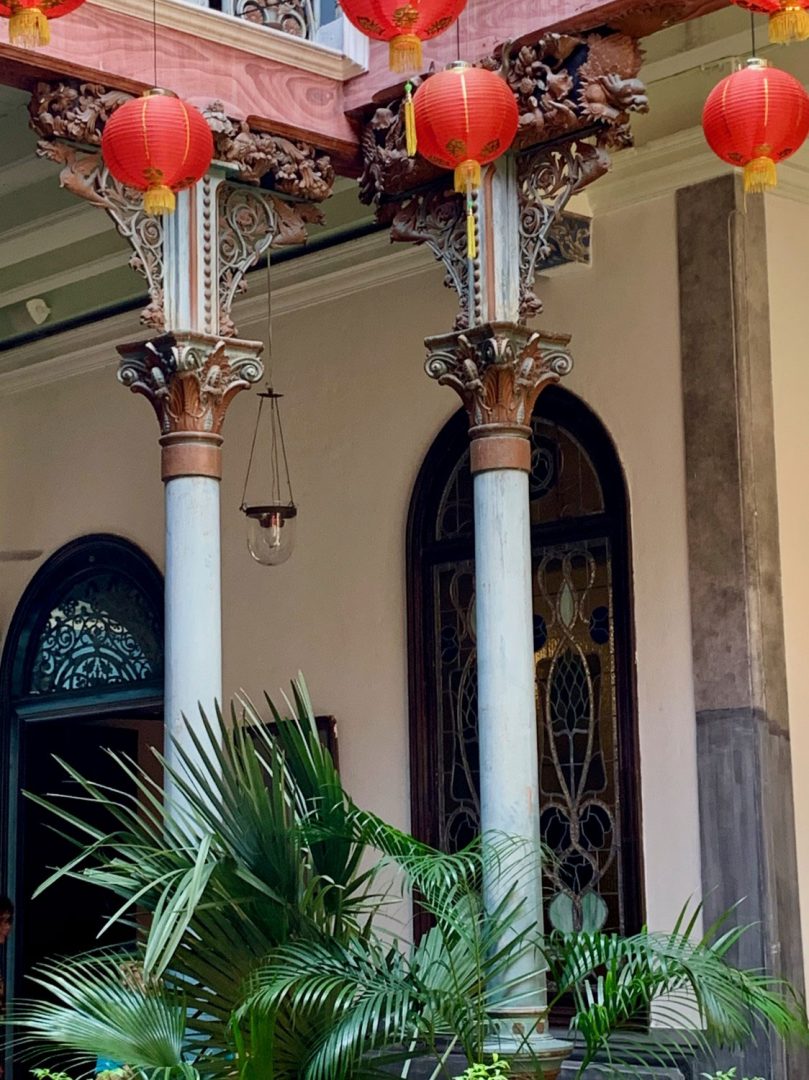 Cheong lived in the mansion until his death in 1916. In his will, he had stipulated that the house could not be sold until the last of his sons had passed away. He had also set aside funds for the upkeep of the mansion. Unfortunately, the Cheong family did not inherit Cheong’s financial acumen to maintain his businesses.
Cheong lived in the mansion until his death in 1916. In his will, he had stipulated that the house could not be sold until the last of his sons had passed away. He had also set aside funds for the upkeep of the mansion. Unfortunately, the Cheong family did not inherit Cheong’s financial acumen to maintain his businesses.
The funds set aside for the mansion also did not take inflation into account and were not sufficiently disbursed. In a state of disrepair, the easy thing to do was to abandon it and allow it to fall to ruins and subsequent demolition, sadly, a fate that has befallen many other magnificent buildings of the previous era.
Cheong’s last daughter-in-law, appreciating how special the building was, was determined to do everything she could preserve his legacy. She let out rooms and every other inch of the mansion for rent, often to poor families from squatter areas so that she could cover the maintenance costs and keep it going. When Cheong’s last son died in 1989, the mansion was put on sale. A group of visionary conservationists bought the house the following year, saving it from possible demolition.
At the time, there was very little recognition towards heritage preservation in Georgetown. The conservationists who bought the mansion undertook what was to become Penang’s first high-profile renovation venture. Between 1991 and 1999, the Cheong Fatt Tze Mansion was methodically and meticulously restored, using techniques sympathetic to its original, traditional construction methods.
Thanks to the painstaking efforts, the mansion was awarded UNESCO Asia-Pacific’s Most Excellent Project Award for Cultural Heritage Preservation in 2000. Riding on the wave of this surprising achievement, the Penang government applied for and was successfully granted the recognition of Georgetown as a UNESCO Heritage site in 2008. Today, Georgetown has become truly distinguished by its boutique heritage hotels and buildings. This, in turn, has considerably elevated its appeal as a tourist destination – since 2007, tourism numbers have more than doubled!
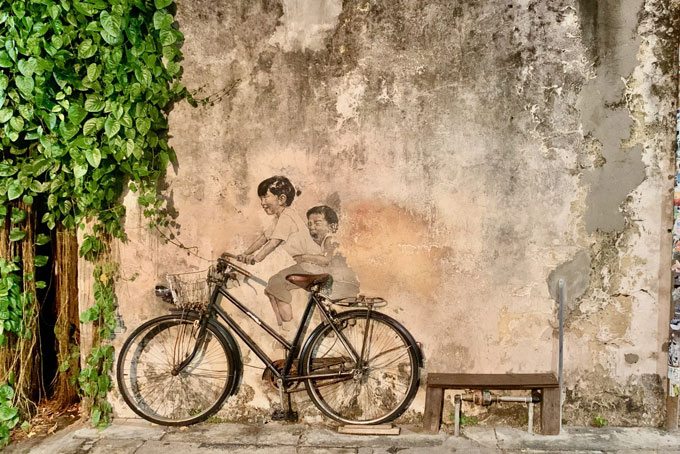
.
This amazing story reminded me of Derek Sivers’ “First Followership” principle for starting a movement. Derek’s research has shown that whilst the visionary leader often takes much of the credit for successfully creating change, what’s often less recognised are the first followers who are instrumental in turning an uncommon idea into change that becomes the new normal. Without these first followers, the efforts of the leader often result in nought, with the leader being viewed by others as eccentric or in Derek’s words, a “lone nut”.
It was the first follower that turned the lone nut into a leader
– Derek Sivers
.
Change does start with a transformational leader with a vision and who has the courage and charisma to put this into words. In the case of the Blue Mansion, this leader was Cheong Fatt Tze. To keep the vision going and take it to another level, what’s often less acknowledged is the critical role of those who first fully embrace it, not just intellectually, but emotionally and spiritually as well. To me, Cheong’s last daughter-in-law is the unsung hero in this story.
Despite not having the fame and charisma of her father-in-law, this individual’s singular vision, courage and determination and her ability to share this with others (in this case, the equally passionate conservationists) ensured that the original vision was not just preserved but morphed into a legacy that continues to have a far-reaching impact on others. Imagine what might have happened to this great idea if she had been like most other “followers” in organisations who may have the enthusiasm but lack the will and courage to drive a vision forward – Penang may not quite be thriving at the same level it is today.

.
Think about a transformation you are leading in your organisation today. Are you infecting others with your compelling vision of this transformation? In spite of resistance, do you continue to extol the benefits of the future state with passion and determination? Just as importantly, have you identified a group of change champions who share your vision and passion, who have the trust of others and who are prepared to dance courageously in step with your lead, infecting others with their courage and messaging?
If you are not in a leadership position, what inspiration can you take from the principle of leading by being the First Follower? How can you leverage the credibility and trust you have with others, that your leader may not have, to turn your leader from a lone nut, into one who has created a real movement with far reaching and long lasting positives for your organisation and those you serve? How could you tap into the courage that already lies inside of you to lead others less courageous and who often just waiting for that other person to drive forward and make it safer for them to follow?
At EQ Strategist, we are passionate about helping organisations undergo transformation to create an even better future for themselves and their stakeholders. Part of our journey includes the empowerment of change champions on how to be those effective first followers, leading from within. Through our journey, we continue to be inspired not just by courageous senior leaders but by their equally and often even more gallant change champions who are willing to stand out for the sake of serving the others.
This article is written to honour these brave, unsung corporate heroes who toil every day with passion and commitment and who, too often, do this without seeking nor receiving the recognition they deserve.



